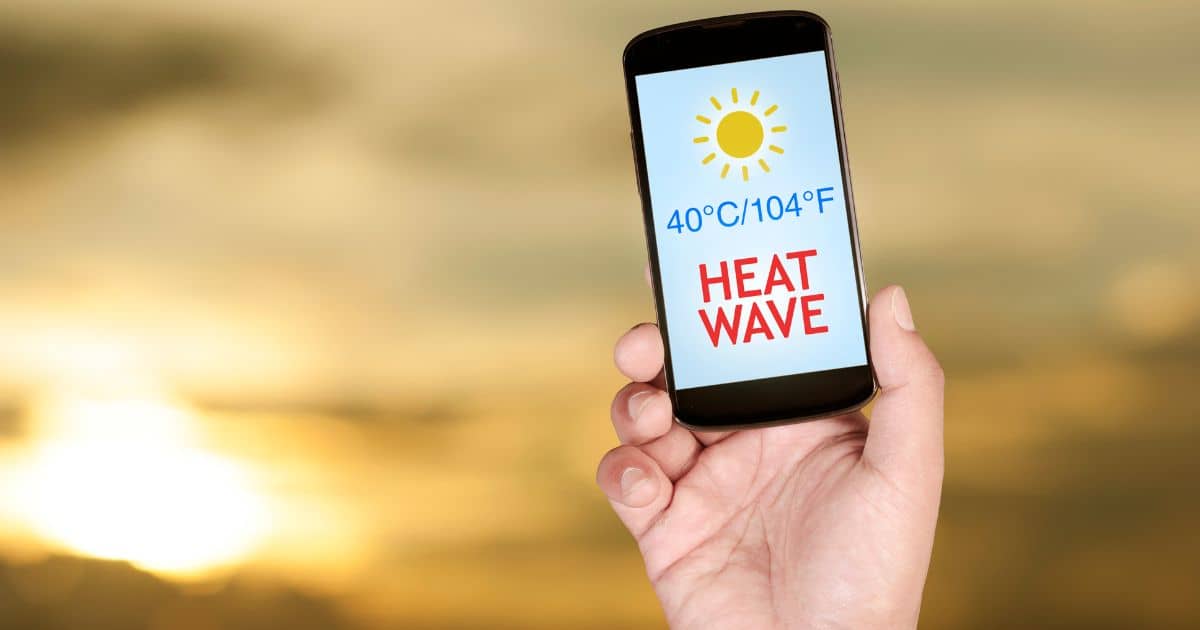As Europe’s temperatures in summer 2023 set yet another terrible record as the highest summer on record, even the last sceptics are starting to understand the urgency of the climate crisis. In a smart city, heat cannot be prevented, but it can be dealt with much better – what could smart cities do to increase their resilience to future heatwaves?
This article will look INTO following topics:
-
Urban heat islands
-
Innovative solutions for future heat in cities
-
Learning from Athens by introducing the first chief urban heat officer
 Identifying urban heat islands
Identifying urban heat islands
Urban heat islands are areas in the city that are warmer than the areas surrounding it. Often, temperatures in the city are up to 5°C higher than those in surrounding suburbs or rural areas. This effect of “island heat” is created by energy emitted from people, cars, buses, and trains, as well as by more concrete and less green space. In combination with heatwaves, which are getting hotter and more frequent, many cities are suffering – in 2022, according to the WHO, 15,000 Europeans died because of heat.
This is where the smart city comes in: Through intelligent technology such as IoT sensors, temperature predictions with artificial intelligence, and real-time updates on factors like temperatures and air pollution, the smart city has tools to mitigate urban heat island and protect its people from temperatures that are higher than average.
As a first step, cities need to measure urban heat and the vulnerability of their population. A good database will help to better deal with urban heat islands and heatwaves, avoiding power cuts and water shortages and instead providing shelter. In the mid-term, the goal of cities affected by high temperatures is to mitigate this effect, while also adapting to it and increasing resilience to short-term extreme weather events.
For example, the city of Toronto shares its Heat Vulnerability Index online. The map also includes information about the location of cooling centres.
Innovative solutions for future heat in cities
Once cities know which neighbourhoods are particularly affected by climate change (these tend to be the less privileged areas with less green spaces and more built-up space), they can get to work on mitigating and adapting. Here is an overview of proven solutions for increasing resilience to city heat:
-
Urban forests:
One of the best ways to reduce the urban heat island is by planting as many trees as possible. They release water vapour and cool their environment. Melbourne, for example, has an Urban Forest Strategy, which also has the benefit of creating more recreational spaces and fostering biodiversity. It takes a while for a forest to grow, of course, and irrigation costs may be prohibitive in some cities. -
Cooler streets:
Often, streets have higher temperatures than even rooftops due to their dark concrete colour, which affects pedestrians and cyclists. By designing streets, train stations, sidewalks, and car parks to have more reflective surfaces, it is possible to cool down urban microclimates. Providing shade, using lighter paints, and redirecting wind are useful approaches to cooling down the streetscape. -
Water everywhere:
Not every city has enough water supply, but those that do can cool down their heat islands by renaturing or re-surfacing rivers, providing little channels along the sidewalks, installing drinking fountains, or including cooling water features into public spaces. Heat-smart cities repurpose their water intelligently and make sure not to waste this precious resource. -
Cooling centres:
Toronto shows that climate shelters or cooling centres are a necessity even in more temperate climates now. These public spaces are open to all. They have a maximum temperature of 26°C and provide resting areas with seats and drinking water. In the US, cooling centres are already common at libraries or recreation centres. They are mostly geared towards vulnerable groups of the population. -
Shadow:
One of the easiest solutions to mitigate the effects of a heatwave is to provide more shadow in the city. Tall trees are helpful and also cool down heat islands but take a while to grow. In the meantime, large screens or awnings can help. The roofs of any covered walkways could then also be greened and/or equipped with solar panels.
Learning from Athens
Athens is currently suffering from a particularly bad heatwave, predicted to last about a week at the end of July with temperatures above 40°C every day. In parts of Greece and on the island of Rhodes, wildfires are spreading because of the prolonged heat and drought, resulting in human suffering and economic damage. However, the Greek capital has something that most cities in Europe don’t have yet: A chief urban heat officer. Since May 2023, Elissavet Bargianni holds this position. Together with UN-Habitat and Arsht-Rock, she is responsible for advancing the city’s heat response and resilience measures.
Her strategies include raising awareness of the impacts of extreme heat and the solutions available; identifying the communities and neighbourhoods that are most vulnerable; improving planning and responding to heatwaves; the implementation of heat protection and cooling projects; and projects like the revival of the ancient Hadrian’s Aqueduct system to green and cool the city. Like her predecessor, she is also looking into the creation of green corridors and the reclamation of wastewater for other purposes.
Designing heat-smart cities
Painting parts of the city’s infrastructure white or providing drinking fountains is a good solution in the short term. But since urban heat islands and heatwaves appear here to stay, what else can cities do in the mid and long term? Importantly, changing building regulations is one of the best pathways for more resilience towards urban heat. By designing cities to better deal with heat, for example through green spaces, shaded spaces, and cooling centres, planners can help to create an environmentally smart city.
Importantly, these building regulations and policies should also apply to other climate extremes like droughts or floods and storms. The approach of the sponge city helps design more permeable cities that are resilient against all kinds of weather. And the recommendations for a climate-smart environment are always similar: Make cities more permeable, increase the number of green spaces, promote public transport over individual cars to reduce CO2, and work with citizens to educate them. Smart city technology helps to achieve cities that are resilient towards heat and emit less CO2.
ARE YOU A SOLUTION PROVIDER IN Need of a tender?
We have a solution for you: The easiest way to find public tenders in the smart city environment. With multiple filtering options, customisable preferences and our Tender Alerts, you will never miss a relevant tender or procurement opportunity. Our Tender Premium service makes it easy for you to grow your business.


